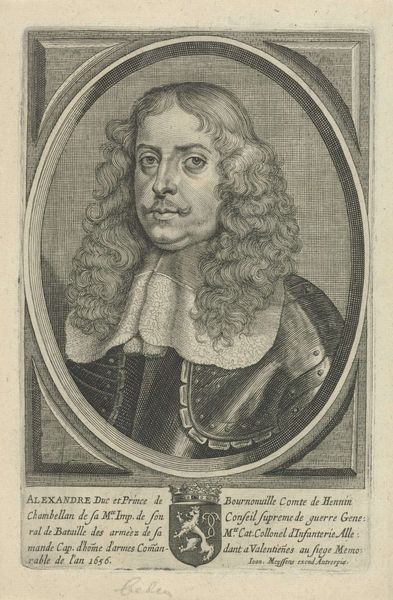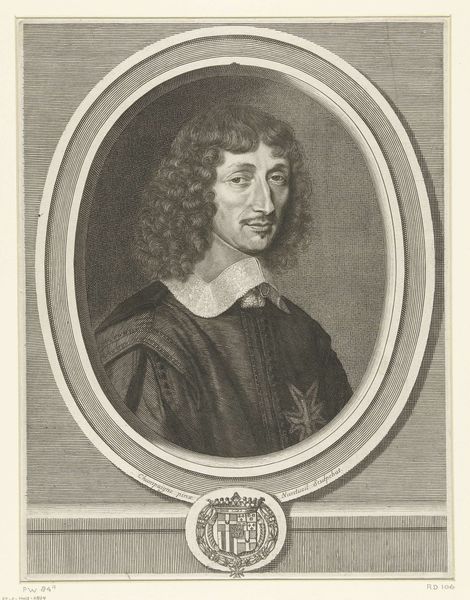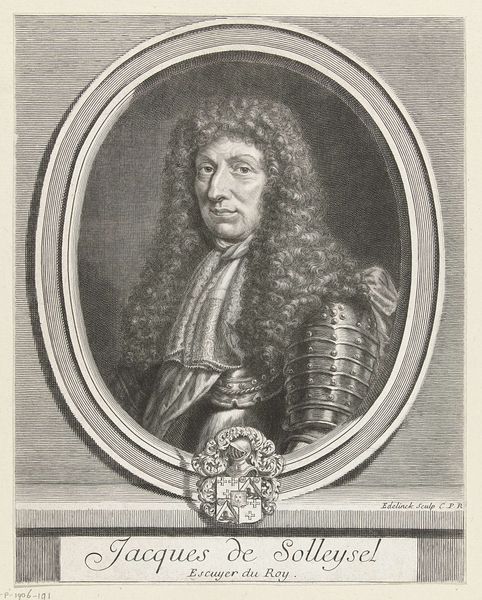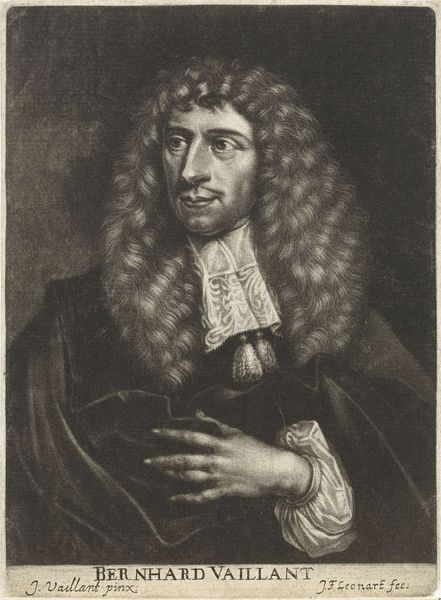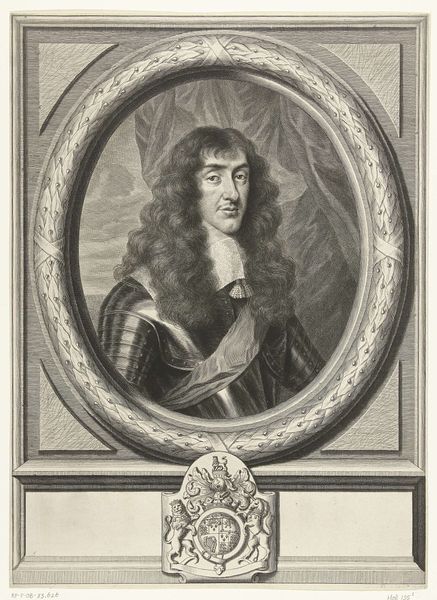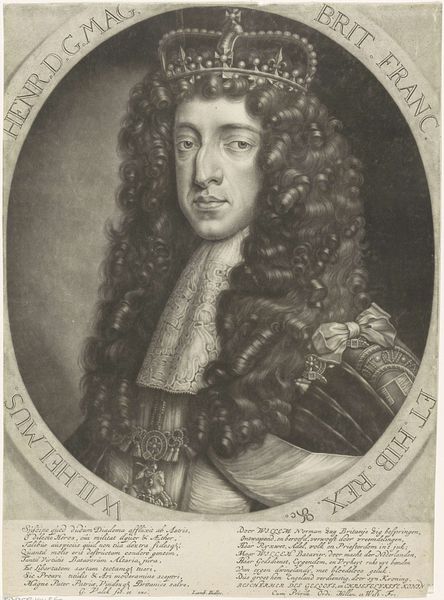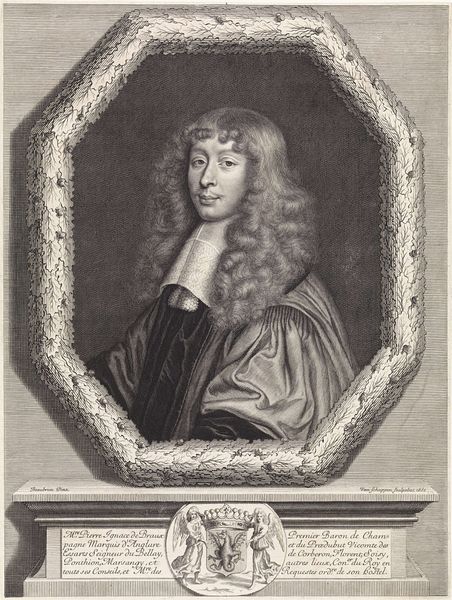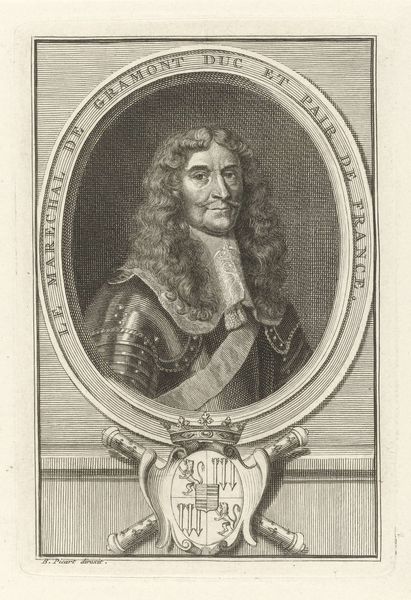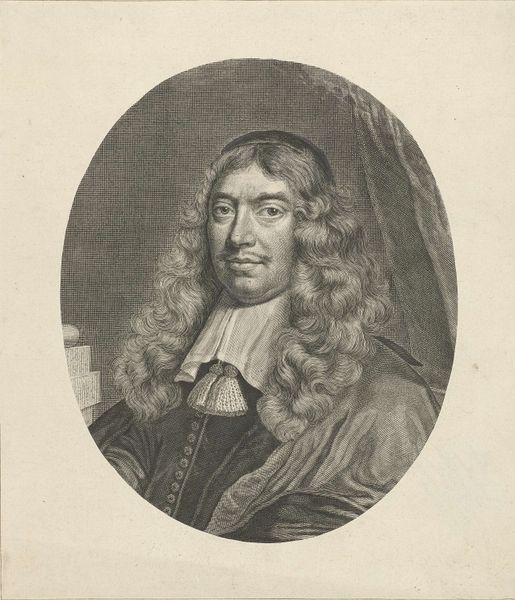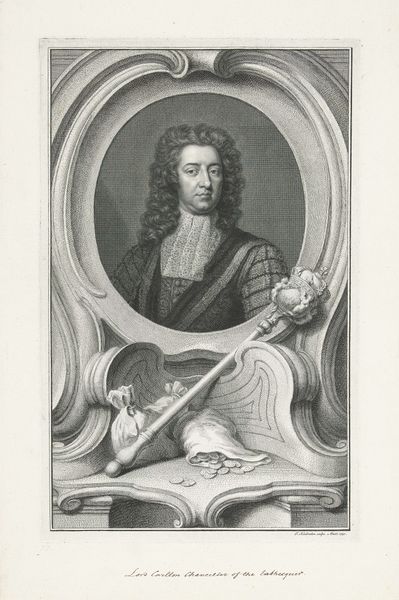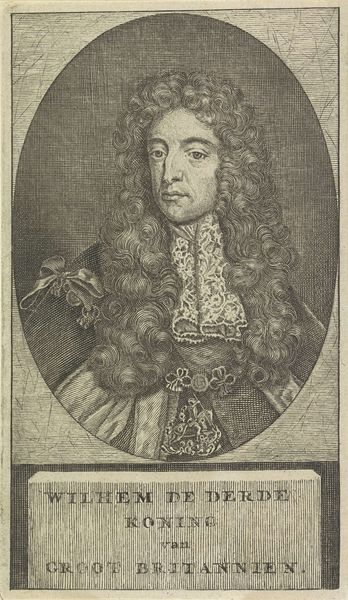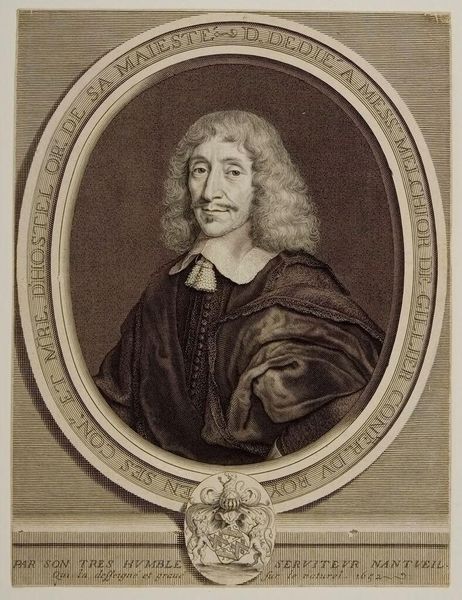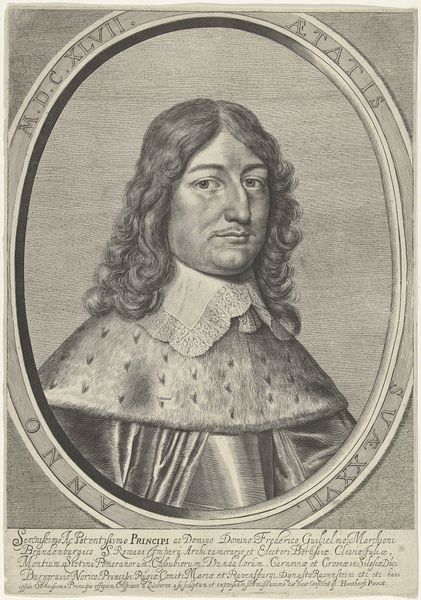
drawing, pen, engraving
#
portrait
#
drawing
#
baroque
#
charcoal drawing
#
form
#
line
#
pen
#
portrait drawing
#
history-painting
#
engraving
Dimensions: height 343 mm, width 265 mm
Copyright: Rijks Museum: Open Domain
Editor: This is Nicolas de Plattemontagne's "Portrait of Pierre Monnerot" from 1659. It appears to be an engraving. The detail is remarkable! It’s such a formal, almost stiff portrait, yet there's something very human in the eyes. What do you see when you look at this piece? Curator: Beyond the remarkable skill of the line work, I see a powerful statement about social structures and identity in 17th-century France. Portraits were often vehicles for asserting status and lineage. Consider the elaborate wig – a deliberate choice reflecting the subject's social standing. How does this portrait function in the context of class and power dynamics? Editor: That makes sense. The wig certainly dominates the image! What about the coat of arms? Is that another sign of power and lineage? Curator: Precisely. The coat of arms acts as a visual signifier, embedding Monnerot within a specific historical and social narrative. Ask yourself, who had access to portraiture and the ability to broadcast their identity in this way? Editor: It certainly wasn't an equal playing field. Are there aspects of portraiture that can give agency to the sitter, or is it all about reinforcing existing power structures? Curator: That's a critical question. Think about the gaze – does it challenge or reinforce the viewer's expectations? The nuances in expression can provide openings for interpretation, suggesting a push and pull between artist, sitter, and the societal forces at play. This invites us to look closer, consider the subject's potential complicity or resistance within their given context. Editor: That's a fascinating perspective. I hadn't considered the idea of resistance within such a formal structure. It makes me rethink the possibilities embedded even within seemingly rigid conventions. Curator: Exactly. By interrogating those conventions, we can uncover richer understandings of the artwork's complexities and its relationship to the social fabric of its time.
Comments
No comments
Be the first to comment and join the conversation on the ultimate creative platform.
